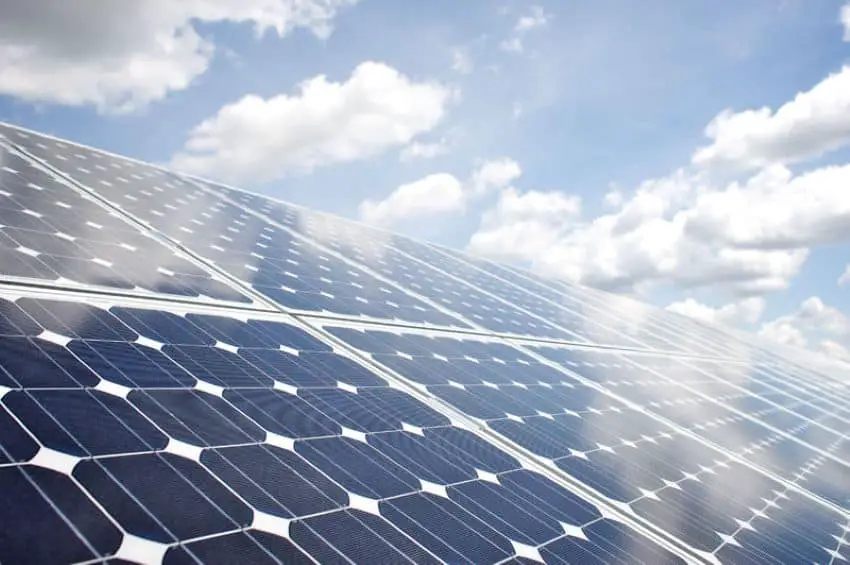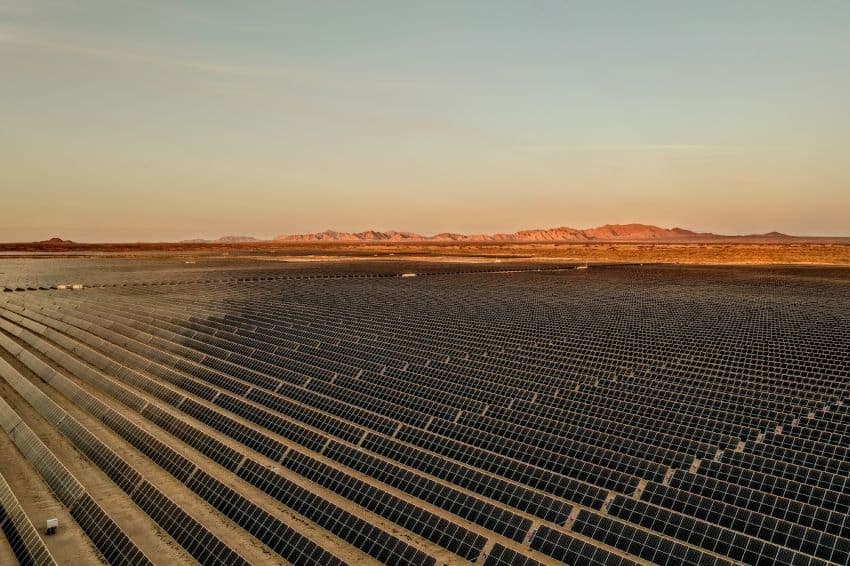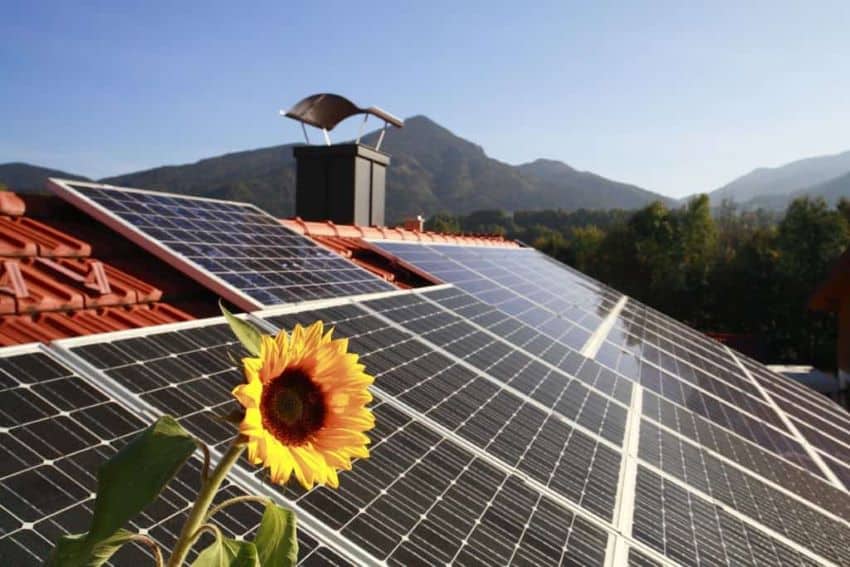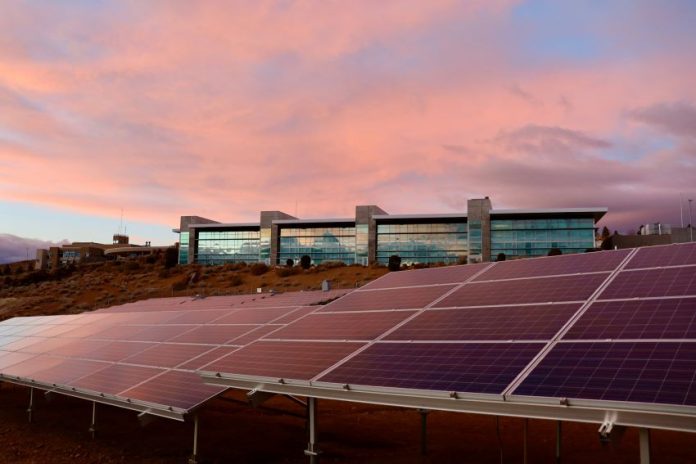With the United Nations suggesting that we all need to transition to green energy sources, making the switch in Mexico is beneficial for both the environment and your wallet. In the upcoming decades, one of the objectives for countries and individuals alike will be self-sufficiency as a step towards creating a more sustainable world, aligning with Goal 7 of the UN Sustainable Development Goals: “Ensure access to affordable, reliable, sustainable, and modern energy for all.”
Fifteen years ago, Ángel de la Torre González was a pioneer in solar panel installation in Tepatitlán de Morelos, Jalisco. He implemented this initiative not only to make his own household self-sufficient but also two of his dairy ranches.

Solar energy has one of the lowest environmental impacts among all available energy sources. (Creative Commons)
Today, these solar panels supply 90% of the electricity required to produce 3,200 thousand liters of milk per day on his ranch and 40% of the electricity needed to produce the 10 thousand liters generated by a collective barn he is affiliated with.
“In both cases, whether for my household or milk production, we recouped the investment within 5 years. The benefits are remarkable because, after that period, you are essentially self-sufficient; you consume what you produce, and it is financially advantageous,” he told MND.
As Ángel explains, another financial advantage of installing solar panels is the increase in the value of your property. Additionally, you can generate extra income by selling surplus energy through the net metering scheme. In Mexico, it is now possible to generate your own electricity using photovoltaic systems and then sell it to the Federal Electricity Commission (CFE) through three distinct compensation schemes. Furthermore, both corporations and individuals can benefit from tax deductions on the cost of installation.

How can I find Solar Panel installation in Mexico?
Solar panel suppliers do not require a license from the Energy Regulatory Commission (CRE) as long as they adhere to the interconnection and cogeneration agreements with the CFE. You can therefore choose any company you feel will do a good job in installation.
There are numerous reputable brands available in Mexico, including Solarsol, Sydemex Solar, SunPower SAECSA, TrinaSolar, CanadianSolar, JASOLAR, QCELLS, GCL, FitSolar and Jinko.
While it is possible to install solar panels independently, it is often more convenient to employ a specialized company. Professional installers can assist with obtaining permits and navigating the procedures with CFE.
An agreement with CFE is established to enable you to connect your solar panel to the electric grid and monitor the balance between what you produce and what you consume. Requests can be submitted through the website.

To sell your excess energy to CFE, you need to meet the following requirements:
- Have a contract with CFE for an average low-voltage supply.
- Have solar panels installed on your property.
- The panels must adhere to CFE regulations: The power output of the source should not exceed 10 kW for residential use or 30 kW for commercial or business purposes.
- CFE must install a bidirectional meter to record both the energy consumed and the energy generated. This enables you to compare and receive compensation for the energy supplied to the grid.
- Sign a consideration contract.
More information about CFE requirements are available at their Customer Service Centers.
The three types of CFE contact
As mentioned previously, installing solar panels can be highly cost effective as you can typically recoup your investment within five years. To sell your excess energy back to CFE, there are 3 types of contracts available:

- Net Metering of Energy. Allows the customer to consume and generate energy under the same supply agreement. The energy generated is deducted from your consumption.
- Net Billing. Allows the customer to receive energy from CFE independently of the energy that the customer generates and sells back to CFE. The energy generated is not subtracted from your consumption.
- Total Energy Sale. The customer sells all the energy produced to CFE. There is no supply contract between the customer and CFE.
How much does installation cost?
How much do solar panels cost in Mexico in 2024? According to supplier websites, the cost of panels for an average house is around 50,000 pesos (US$2,830) and the recommendation is to opt for panels that provide more power, even if they are more expensive.
The benefits of installing solar panels
The financial benefits of installing solar panels are undeniable: “In my 15 years of experience with solar panels, the results have been overwhelmingly positive. I highly recommend them for both residential and commercial purposes,” says Ángel.
And for the environment, there are 3 major long-term benefits:
Energy independence: In a country like Mexico, where the sun is available practically all year round this goal is entirely achievable.
Carbon footprint reduction and green energy: Solar energy does not emit greenhouse gasses, thus it does not contribute to global warming. While no energy source, including renewables, is completely free of environmental impact, solar energy has one of the lowest environmental impacts among all available energy sources, according to the International Renewable Energy Agency (IRENA).
Any questions about how to go about getting solar panels installed in Mexico? Feel free to leave a question in the comments!
Ana Paula de la Torre is a Mexican journalist and collaborator for various outlets including Milenio, Animal Político, Vice, Newsweek en Español, Televisa and Mexico News Daily.
